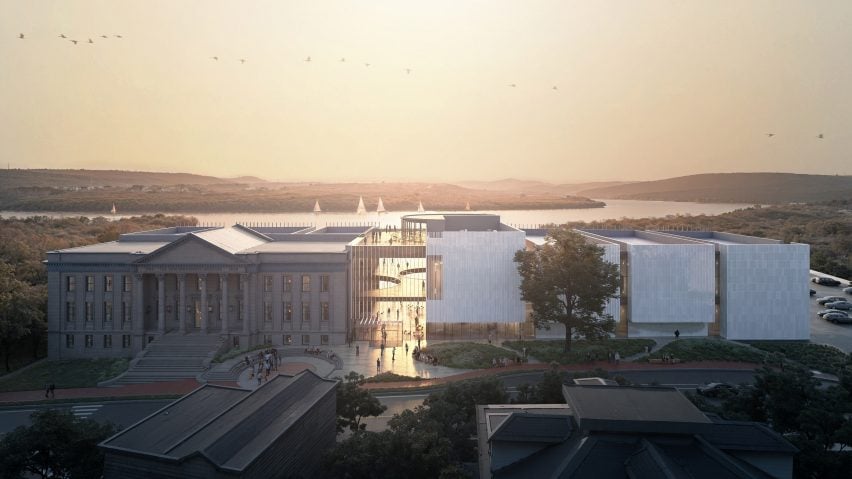
Diamond Schmitt Architects designs Canada's "oldest continuing museum"
Toronto-based studio Diamond Schmitt Architects has been selected to design the New Brunswick Museum in Saint John, Canada, which is one of the country's oldest museums.
The 134,000-square-foot building designed by Diamond Schmitt Architects in collaboration with international firm EXP will unite the current disparate collections of the museum, currently spread in different facilities throughout Saint John, into a new facility at the site of the current neoclassical building.
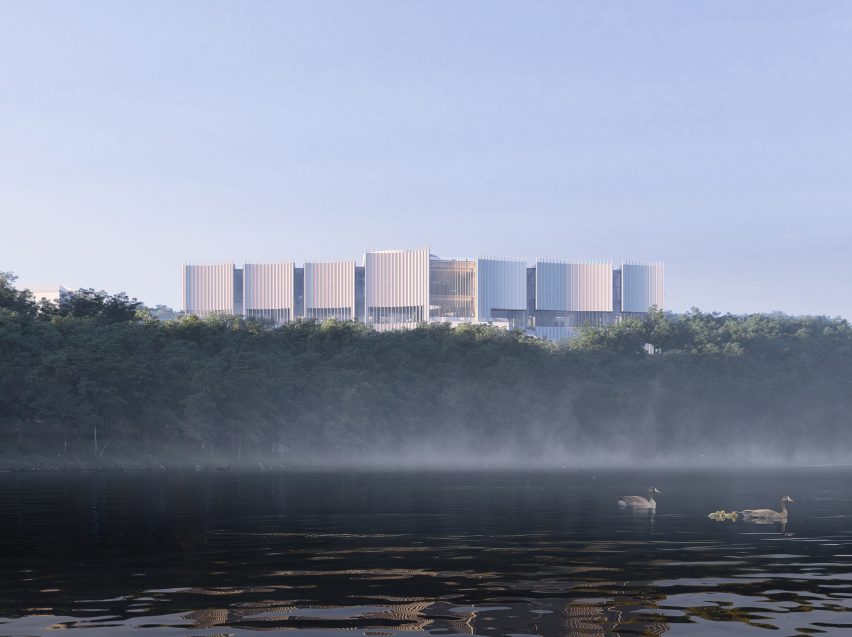
The museum's current primary location is within a neoclassical building on a slip of land north of the city that opened in 1934 – with roots in a collection operating in different parts of the city since the early 19th century, giving it the title of Canada's "oldest continuing museum".
Diamond Schmitt Architect and EXP's design will create a structure, expanding the site while maintaining the historic facade on the eastern, street-facing aspect of the building and the northern face, which will serve as an internal wall. Some of the historic building's interiors may be retained, according to the team.
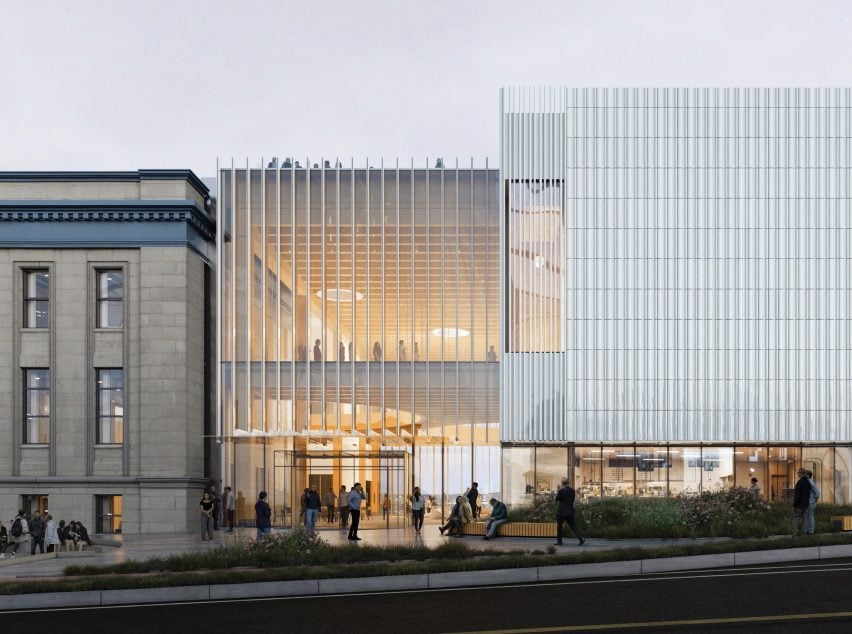
To its north and west, a structure with a white, monolithic facade broken up by vertical panes of glass will be erected, complimenting the historic structure and completely obscuring it on the water-facing, western side.
According to the studio, the configuration was meant to mediate the urban environment with the waterfront.
"Taking inspiration from the museum's original site – one of the great vantage points in Saint John – our design embraces the rich history of New Brunswick's heritage and natural landscape," said Diamond Schmitt Architects principal Donald Schmitt.
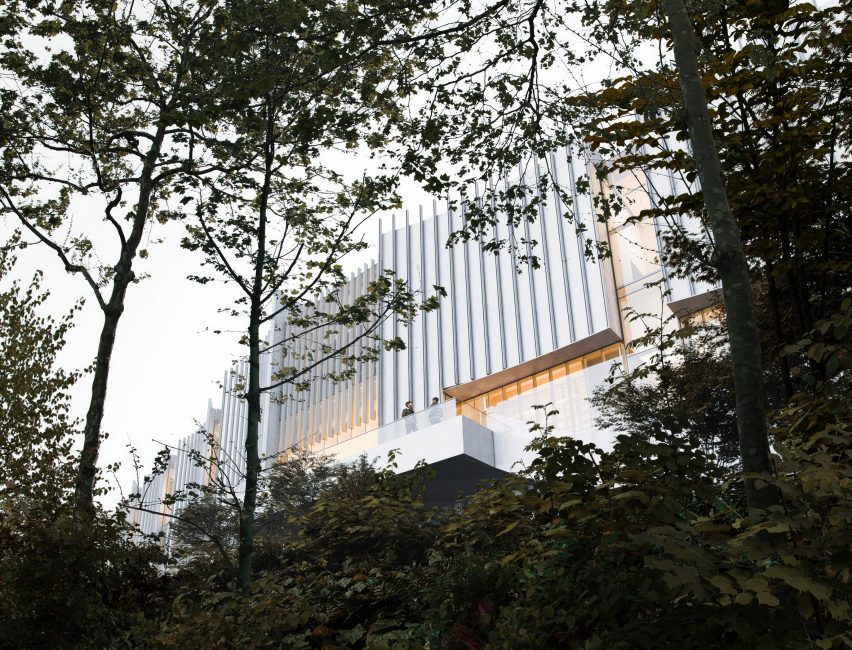
A double-height entryway – called the great room by the studio – will be clad in glass, fronted by metal louvres
It will create a buffer zone and serve as a "crossroads" between the northern section and the historical structure, the facade of which will be a wall within the new atrium space.
This is a move used in other modern additions to historic structures, such as Studio Gang's recent in-fill at the Arkansas Museum of Fine Arts and Rafael Viñoly's use of a glass atrium to create an interior plaza between a beaux arts structure and a Marcel Breuer addition in Cleveland.

This entry pavilion will connect to the new wings and create a pathway from the parking lot to the terrace on the western side.
It will have a mezzanine walkway that connects the second storeys of the north and west additions with semi-circular cut-outs.
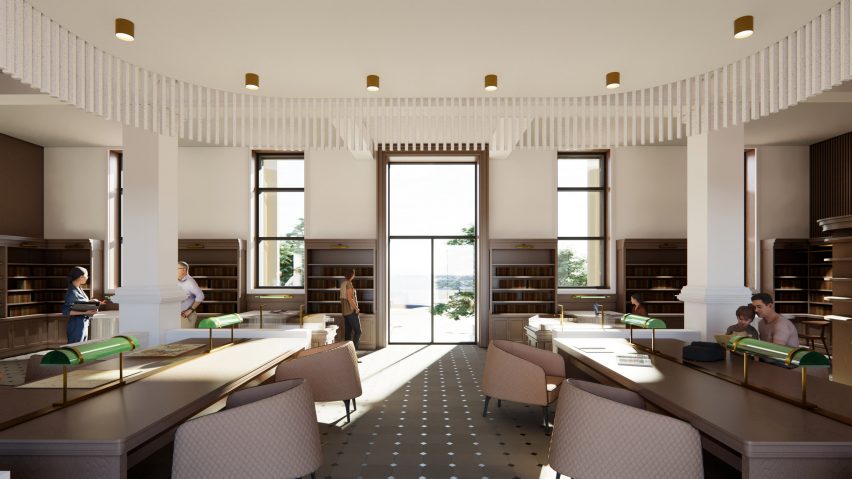
Renderings of the space show massive wooden columns and wooden rafters, and the studio said that the museum is "considering the use of mass timber" in the construction.
Skylights and the sections of vertical glass along the new facade will let in plenty of natural light to the new facilities, most of which is gallery space, but also includes amphitheatres, gathering spaces and research facilities.
The historic wing and its basement will hold a library and serve as storage for the museum's collection and as an administrative place. A rooftop viewing area will be placed on top of the "great room".
"When completed, the museum's research work and exhibitions will be brought together within one sustainable, decarbonized facility that fully supports the museum's mission of preserving, researching, interpreting, and exhibiting the natural and cultural heritage of the Province of New Brunswick," said Diamond Schmitt Architects.
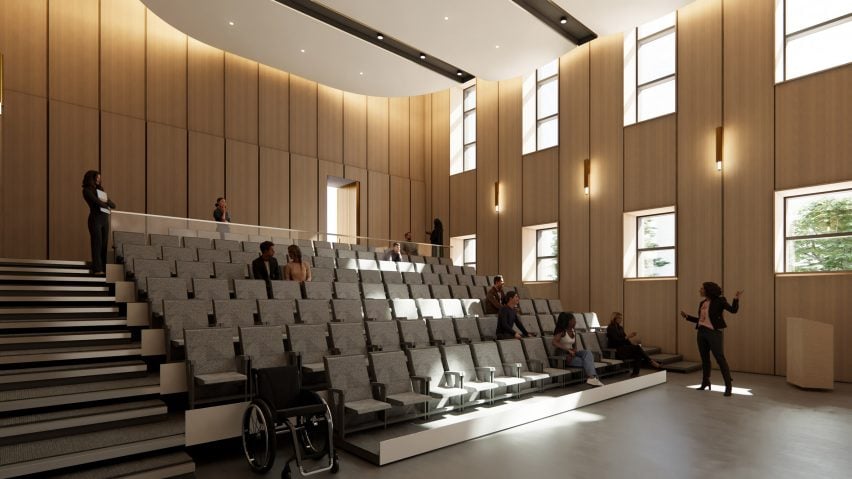
The studio is currently pursuing a "zero-carbon certification" and aims to "decarbonize" the building through insulation, electric boilers and air source heat pumps.
Other museum that utilise historical elements include Lever Architecture's upcoming mass-timber expansion of an art museum in Maine.
The images are by PLAY-TIME unless otherwise noted, courtesy of Diamond Schmitt.